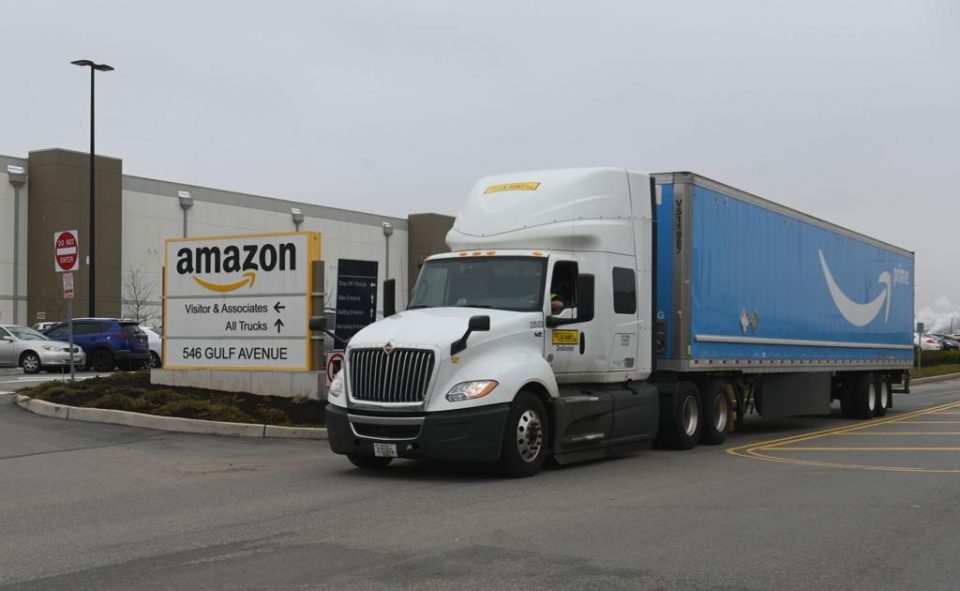SEATTLE — To reflect the greater risk of injury to workers inside Amazon’s high-speed e-commerce warehouses, Washington state officials propose charging the commerce giant a higher workers’ compensation premium for its fulfillment centers than for mechanized logging operations, law enforcement agencies, meatpacking plants and more than 260 other Washington industries.
The plan would effectively put Amazon’s flagship logistics operations in their own classification, while other warehouse operations with lower average claims would see their workers’ comp premiums sharply reduced.
Amazon’s logistics network recently saw its busiest period of the year, with “Prime Day” marking an early start to the annual holiday peak season.
Insurance actuaries at the Washington Department of Labor & Industries, which runs the state’s program to fund medical care and lost wages for people hurt or sickened on the job, noticed in 2019 that within the warehousing industry, fulfillment centers were accounting for an ever greater share of injury claims and insurance costs.
Other warehouse operators complained to the agency that this was driving up their insurance premiums, which increased 18% in 2020, more than for any other industry. These operators, which have seen their own workers’ comp claim rates trend downward, were effectively subsidizing the e-commerce giant for the higher rate of injuries its workers reported.
“Further review of the warehouse classification concluded that fulfillment centers were more hazardous and were submitting claims more often,” said Michael D. Ratko, deputy assistant director of L&I’s Insurance Services Division.
That justifies putting fulfillment centers in a proposed risk class of their own, he said. Workers’ comp premiums for Amazon fulfillment centers would increase 15% in 2021 to more than $2.17 per hour, paid by workers and the company.
“At this time, Amazon is the only business that would be covered under the new risk class,” he said.
General merchandise warehouses, meanwhile, would see their rates fall by a fifth next year under the proposed change.
The state continually reviews risk classifications, which group together businesses with similar worker injury risks, Ratko said. For example, in 2014, it separated tree care and pruning services from the broader land-clearing classification.
L&I’s move comes amid intensifying scrutiny of Amazon, even as its sales (and stock price) have climbed during the coronavirus pandemic. The company is accelerating the expansion of its logistics operations as people buy more goods online. Amazon has at least 24 logistics facilities in Washington state, according to a database maintained by logistics consulting firm MWPVL International, covering nearly 7 million square feet.
It was not clear how many of Amazon’s logistics facilities would fall under the new risk classification, but L&I reported 5,146 full-time employees worked in fulfillment centers in the state as of March, compared with 6,053 in the general warehouse classification.
The largest Amazon logistics facilities are its enormous fulfillment centers, where workers rush to keep up with robotic systems as they assemble and pack customer orders to meet shipment promises of one to two days. Their productivity is closely monitored and workers can be fired for falling behind.
Amazon reinstated production quotas for some workers ahead of its Prime Day sale, despite assurances that they would not be disciplined for low productivity rates earlier in the pandemic.
L&I injury claims data show that workers’ comp claims from Amazon fulfillment centers in Washington increased from just over 4 per 100 full-time employees in 2014 to 15 per 100 in 2018. Meanwhile, the rest of the warehousing class — general merchandise warehouses, grocery distributors and other operations that tend not to have Amazon’s speed imperative _ saw claim frequency trend downward from about 11.5 claims per 100 employees in 2014 to just under 10 claims per 100 employees in 2018.
The most common injuries in fulfillment centers are caused by overexertion, being struck by an object, repetitive motion and falling. Injuries in warehouses are similar, but in fulfillment centers “there are just more of them,” Ratko said.
A report last month by Reveal from The Center for Investigative Reporting, citing internal Amazon safety data and federal workplace injury reports, found that the injury rate across more than 150 fulfillment centers nationwide had increased 33% from 2016 to 2019, and was nearly twice the industry average.
An Amazon spokesperson declined to comment for this story.
Copyright 2020 Tribune Content Agency.


